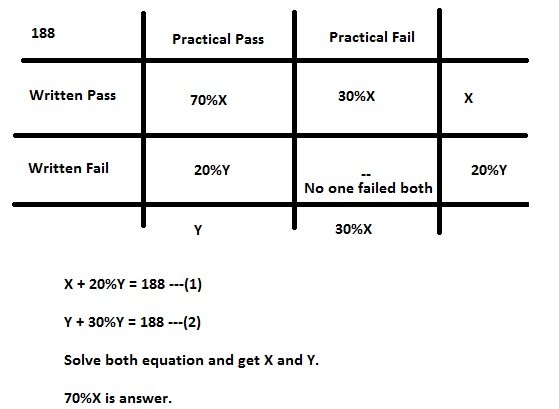Events & Promotions
|
|

GMAT Club Daily Prep
Thank you for using the timer - this advanced tool can estimate your performance and suggest more practice questions. We have subscribed you to Daily Prep Questions via email.
Customized
for You
Track
Your Progress
Practice
Pays
Not interested in getting valuable practice questions and articles delivered to your email? No problem, unsubscribe here.
- Nov 20
07:30 AM PST
-08:30 AM PST
Learn what truly sets the UC Riverside MBA apart and how it helps in your professional growth - Nov 20
01:30 PM EST
-02:30 PM IST
Learn how Kamakshi achieved a GMAT 675 with an impressive 96th %ile in Data Insights. Discover the unique methods and exam strategies that helped her excel in DI along with other sections for a balanced and high score. - Nov 19
12:30 PM EST
-01:30 PM EST
Learn how Keshav, a Chartered Accountant, scored an impressive 705 on GMAT in just 30 days with GMATWhiz's expert guidance. In this video, he shares preparation tips and strategies that worked for him, including the mock, time management, and more - Nov 22
11:00 AM IST
-01:00 PM IST
Do RC/MSR passages scare you? e-GMAT is conducting a masterclass to help you learn – Learn effective reading strategies Tackle difficult RC & MSR with confidence Excel in timed test environment - Nov 23
11:00 AM IST
-01:00 PM IST
Attend this free GMAT Algebra Webinar and learn how to master the most challenging Inequalities and Absolute Value problems with ease. - Nov 24
07:00 PM PST
-08:00 PM PST
Full-length FE mock with insightful analytics, weakness diagnosis, and video explanations! - Nov 25
10:00 AM EST
-11:00 AM EST
Prefer video-based learning? The Target Test Prep OnDemand course is a one-of-a-kind video masterclass featuring 400 hours of lecture-style teaching by Scott Woodbury-Stewart, founder of Target Test Prep and one of the most accomplished GMAT instructors.
Kudos
Bookmarks
C
Be sure to select an answer first to save it in the Error Log before revealing the correct answer (OA)!
Difficulty:
 55%
(hard)
55%
(hard)
Question Stats:
68% (02:31) correct 32%
(02:32)
wrong
32%
(02:32)
wrong  based on 1071
sessions
based on 1071
sessions
History
Date
Time
Result
Not Attempted Yet
To receive a driver license, sixteen year-olds at Culliver High School have to pass both a written and a practical driving test. Everyone has to take the tests, and no one failed both tests. If 30% of the 16 year-olds who passed the written test did not pass the practical, how many sixteen year-olds at Culliver High School received their driver license?
(1) There are 188 sixteen year-olds at Culliver High School.
(2) 20% of the sixteen year-olds who passed the practical test failed the written test.
(1) There are 188 sixteen year-olds at Culliver High School.
(2) 20% of the sixteen year-olds who passed the practical test failed the written test.
Kudos
Bookmarks
I got C.
Just did a Vinn Diagram.

You are given:
to get a license you have to pass BOTH which is the overlap of the two circles.
Also, no one failed both so nothing outside circles.
30% W but not P.
Statement 1: 188 total 16 year olds. INSUFF.
Statement 2: 20% P but not W.
So this tells you that the overlap is 50% of total 16 yr olds. But the question wants a definite number, if it had said what % of 16 got a license then 2 would be sufficient. INSUFF.
together you know there are 188 total 16 year olds and 50% got their license so 94 got their license. C.
What is the OA?
Just did a Vinn Diagram.

You are given:
to get a license you have to pass BOTH which is the overlap of the two circles.
Also, no one failed both so nothing outside circles.
30% W but not P.
Statement 1: 188 total 16 year olds. INSUFF.
Statement 2: 20% P but not W.
So this tells you that the overlap is 50% of total 16 yr olds. But the question wants a definite number, if it had said what % of 16 got a license then 2 would be sufficient. INSUFF.
together you know there are 188 total 16 year olds and 50% got their license so 94 got their license. C.
What is the OA?
Kudos
Bookmarks
Clearly 1 and 2 are not sufficient.
Using both options it is possible to find out the answer.

Question.jpg [ 39.46 KiB | Viewed 21405 times ]
Using both options it is possible to find out the answer.
Attachment:
Question.jpg [ 39.46 KiB | Viewed 21405 times ]















